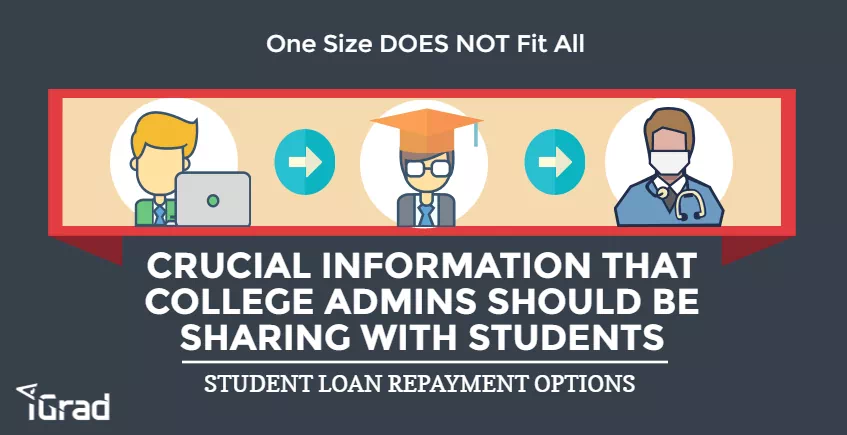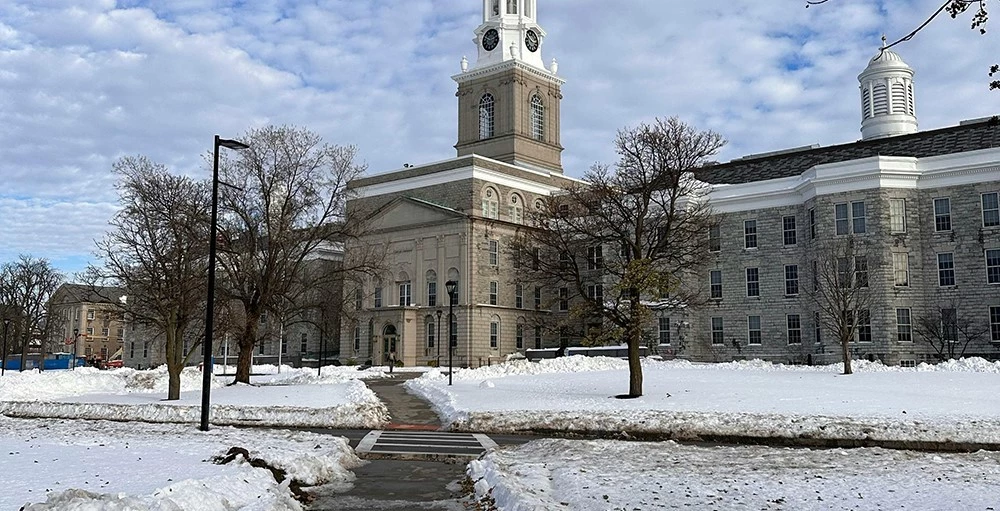Eventually, there will come the dreaded time when students have to begin repaying their student loans. If you graduate, leave school, or drop below half-time enrollment, you guessed it—you’ll have to start paying back your loans.
The Grace Period
The good news is they likely will have a grace period, a little reprieve before they must begin repaying their federal student loans. Federal student loans allow for the following grace periods after your Last Date of Attendance:
- 6 months (for Federal Stafford Loans)
- 9 months (for Federal Perkins Loans)
For parent who borrowed a Direct PLUS Loan for a dependent undergraduate child, interest will begin to accrue at the time the loan is fully disbursed. A parent borrower may contact the loan servicer to request a deferment while the child is enrolled at least half-time and for an additional six months after the child ceases to be enrolled at least half-time.
Graduate students who have a Direct PLUS Loa may defer repayment while enrolled at least half-time, and (for PLUS loans first disbursed on or after July 1, 2008) for an additional six months afte they are no longer enrolled at least half-time.
The Payment Plans
Once it’s time to start paying back loans, there are a few different options. One size does not have to fit all when it comes to repaying loans. (Note: Parent PLUS loans are not eligible for all the following repayment plans.)
Keeping close tabs on a student loan balance will help borrowers make smart money decisions while in school and will help them be more aware of their options during repayment.
iGrad users can see all of their student loan info in one place—in five minutes or less—with iGrad's Student Loan Upload tool! They can choose from an array of different payment options that best fits their situation. Here's useful information that all college administrators should be sharing with students before and after graduation:
1) PAYMENT IN FULL
The Breakdown:
You may pay your loan in full, at any time, without penalty.
2) STANDARD REPAYMENT
The Breakdown:
- Pay a fixed amount each month until loans are paid in full
- Monthly payments will be at least $50
- Up to 10 years to repay (or up to 30 years on a consolidation loan)
Who’s It For?
If you’re looking to pay off your loans quickly, this may be the plan for you. You’ll save money over the long-term by paying less interest, but your monthly payments will likely be higher. Remember, you’ll have no more than ten years to repay.
3) EXTENDED REPAYMENT
The Breakdown:
- Pay a fixed or graduated monthly amount until loans are paid in full.
- Must have more than $30,000 in outstanding federal loans
- Up to 25 years to repay
Who’s It For?
If you’re looking to control your monthly student loan payments, this may be the plan for you. You’ll ultimately pay more over the long-term, because you’ll be paying more interest over the 25-year plan, but your monthly payments will likely be smaller. Borrowers considering Extended Repayment should also consider available income-driven repayment options.
4) GRADUATED REPAYMENT
The Breakdown:
- Payments start out low and increase every two years
- Up to 10 years to repay (or up to 30 years on a consolidation loan)
Who’s It For?
If you expect your income to steadily increase over time, this may be the plan for you. You'll be able to control your monthly payments when your income is less than desirable, although your monthly payment will never be less than the amount of interest that accrues between payments. Even though your monthly payment will gradually increase, no single payment under this plan will be more than three times greater than any other payment. Borrowers considering Graduated Repayment should also consider available income-driven repayment options.
5) PAY AS YOU EARN REPAYMENT (PAYE)
The Breakdown:
- Became effective December 21, 2012.
- Available only for Direct loans; FFEL loans can be consolidated into Direct Loans.
- Monthly payments capped at 10% of discretionary income Eligibility requirement: you must be a “new borrower” (you had no balance on a federal loan on October 1, 2007 and you borrowed a federal loan on or after October 1, 2011.
- Possibility of loan forgiveness after 10 years of work in a public service job if you've consistently been repaying and meet certain other requirements.
- At the end of 20 years, any remaining balance on the loan will be forgiven (with the remaining balance being taxable as income under current law).
Who’s It For?
If you'd like to make monthly payments based on your income, and you are a “new borrower”, this may be the plan for you. Additionally, if you plan on working in public service, a the PAYE plan may offer the possibility of loan forgiveness. Check out thisPAYE resource for more info!
6) INCOME BASED REPAYMENT (IBR)
The Breakdown:
- Became effective July 1, 2009.
- Monthly payments capped at 15% of discretionary income.
- Eligibility requirement: your monthly repayment amount under IBR must be less than the monthly amount calculated under a 10-year standard repayment plan.
- Possibility of loan forgiveness after 10 years of work in a public service job if you've consistently been repaying and meet certain other requirements.
- At the end of 25 years, any remaining balance on the loan will be forgiven (with the remaining balance being taxable as income under current law).
Who’s It For?
If you’d like to make monthly payments based on your income and don't qualify for the Pay As You Earn (PAYE) plan, this may be the plan for you. Additionally, the IBR plan may offer the possibility of loan forgiveness. Check out this IBR resource for more info!
7) INCOME CONTINGENT REPAYMENT (ICR)
The Breakdown:
- Available only for Direct Loans.
- Monthly payments calculated each year based on your family size and adjusted gross income (AGI), plus your spouse's income if you're married.
- At the end of 25 years, any remaining balance on the loan will be forgiven (with the remaining balance being taxable as income under current law).
- Up to 25 years to repay.
Who’s It For?
If you’d like to base the size of your monthly Direct Loan payments on the size of your income and family, this may be the plan for you, however, IBR and PAYE may be more affordable. The ICR plan also offers the possibility of having your loans forgiven after 25 years if you meet specific conditions.
8) INCOME SENSITIVE REPAYMENT
The Breakdown:
- Available only for FFEL loans Monthly payments based on your annual income
- Up to 10 years to repay
Who’s It For?
If you’d like to base the size of your monthly FFEL Loan payments on the size of your income, this may be the plan for you. Keep in mind that this plan is tailored to individuals who’d like to pay off their FFEL loans within 10 years.
9) REPAYE
The Breakdown:
- The "Revised Pay-As-You-Earn" plan is the most recent, announced by the Department of Education on October 27, 2015.
- Monthly payments limited to 10% of your monthly income.
- Up to 20 years to repay for undergraduate loans.
- Up to 25 years to repay for graduate and professional degree loans.
Who’s It For?
If you’d like to base the size of your monthly FFEL Loan payments on the size of your income, this may be the plan for you. Remember that lower monthly payments and a longer payoff term means you'll pay more over the life of the loan.
Helpful resources available t borrowers:
Loan Consolidation: You can combine your student loans into a single loan; learn more about the pros and cons.
Download Federal Forms For Consolidation, Forbearance, & Deferment Changing Repayment Plans: You can switch from one plan to another once per year, as long as the maximum term of your new plan is longer than the time period in which you have already been repaying your loans. Deferment: Under certain conditions, deferment allows you to temporarily stop making payments on your student loans.
Forbearance: If you do not qualify for deferment, under certain conditions, forbearance allows you to temporarily stop making payments, extend your repayment time, or make smaller payments on your student loans; however, interest does continue to accrue.
Any and all resources available should be used in an effort to continue repaying your loans and avoiding that one little dreaded word: default.
Don't Default! Default is defined as the situation you enter when you fail to make your loan payments over time. Several institutions can take action to recover the money that you owe, including your school, your loan guarantor, and the federal government (among others).
Disastrous consequences of default, as cited by the Department of Education:
National credit bureaus can be notified of your default, which will harm your credit rating, making it hard to buy a car or a house. You may be ineligible for additional federal student aid if you decide to return to school.
Loan payments can be deducted from your paycheck. State and federal income tax refunds can be withheld and applied toward the amount you owe.
You may have to pay late fees and collection costs on top of what you already owe.
You can be sued.
Don’t default! By applying for all available aid, borrowing responsibly, and being aware of all the payment plans and resources available to you, you’ll put yourself in a great position to repay the student loan money you invested in your education.








